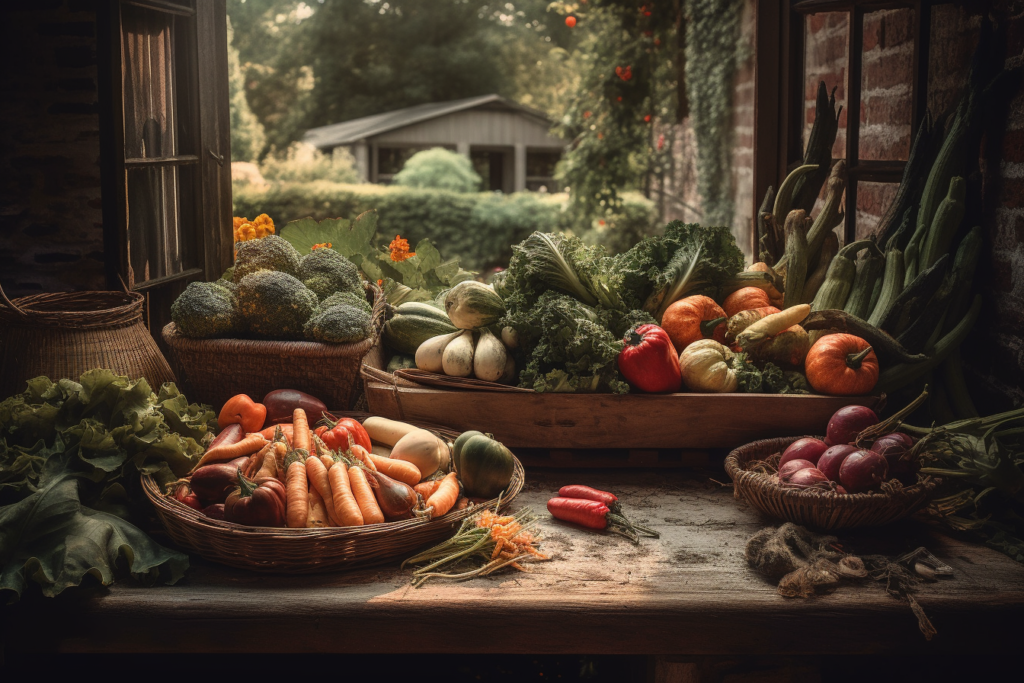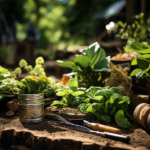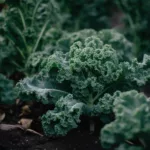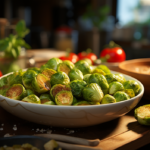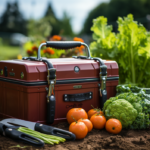Table of Contents
Explore the Biodiversity of Heirloom Vegetables and Elevate Your Home Cooking Game with These Tips and Tricks
Are you tired of eating the same old bland vegetables from the grocery store? Well, it’s time to spice up your kitchen garden with some heirloom vegetables! These unique varieties have been passed down for generations, each with its distinctive flavor, color, and texture.
In this guide, we’ll take a deep dive into the wonderful world of heirloom vegetables. We’ll explore the remarkable history of these veggies, learn why they’re a must-have in every kitchen garden, and provide you with tips on how to grow them successfully.
Not only are heirloom vegetables delicious and diverse, but they’re also good for you and the environment. By growing them in your garden, you’ll be supporting biodiversity, reducing your carbon footprint, and enjoying fresh and tasty produce.
So, if you’re looking to step up your gardening game, grab your shovel, and let’s get started on creating your very own heirloom vegetable garden.
What are Heirloom Vegetables?
Heirloom vegetables are unique varieties of vegetables that have been passed down from generation to generation, often within the same family or community. These vegetables are known for their distinct qualities and characteristics that have been preserved through natural pollination or selective breeding over many years.
Heirloom vegetables come in many shapes, sizes, colors, and flavors. Unlike modern hybrid vegetables, heirloom varieties have been grown for their superior taste, texture, or appearance, rather than for their ability to withstand long-distance transportation or mass production.
Some popular examples of heirloom vegetables include:
- Cherokee Purple tomatoes: these tomatoes have a distinctive deep purple color and a rich, smoky flavor.
- Detroit Dark Red beets: these beets have a deep red color and a sweet, earthy flavor.
- Scarlet Nantes carrots: these carrots have a bright orange color and a sweet, crisp texture.
- Lemon cucumbers: these cucumbers are small and yellow, with a mild, lemony flavor.
Why Choose Heirloom Vegetables for Your Kitchen Garden?
There are many good reasons to choose heirloom vegetables for your kitchen garden. Here are some of the most compelling reasons:
- Taste: Heirloom vegetables are known for their superior taste and flavor, which can elevate your home cooking to the next level.
- Nutrition: Heirloom vegetables are often grown in nutrient-dense soil and are free of chemical fertilizers and pesticides, making them more nutritious than conventionally grown vegetables.
- Biodiversity: By growing heirloom vegetables, you can help preserve the genetic diversity of our food supply and prevent the loss of unique crop varieties.
- Sustainability: Heirloom vegetables are often better adapted to local growing conditions and require less water, fertilizer, and energy than hybrid or genetically modified vegetables.
- Community: Heirloom vegetables have a rich history and cultural significance that can connect you to your family, community, and the land.
In the next section of this guide, we’ll delve into the fascinating history of heirloom vegetables and learn more about how they’re different from other types of vegetables.
Why You Should Choose Heirloom Vegetables for Your Kitchen Garden
If you’re considering starting a kitchen garden, there are many reasons why you should choose heirloom vegetables over hybrid or genetically modified varieties. Here are some of the most significant benefits:
- Superior Taste and Flavor: Heirloom vegetables are renowned for their exceptional taste and flavor that can elevate your home cooking to the next level. Unlike hybrid vegetables, which are often bred for their appearance, size, or disease resistance, heirloom varieties are selected for their unique taste, texture, and aroma.
- Nutritious and Safe: Heirloom vegetables are often grown using organic or sustainable farming practices, meaning they’re free of synthetic fertilizers, pesticides, and other chemicals. Moreover, since they’re typically grown in small-scale settings, heirloom veggies have a lower risk of contamination than commercial produce, making them a safer and healthier choice for you and your family.
- Preserving Biodiversity: By growing heirloom vegetables, you’re helping to preserve the genetic diversity of crops that may face extinction in the face of a changing climate, pests, and diseases. Heirloom vegetables come in many different shapes, sizes, colors, and textures, and each has its unique history and cultural significance, making them a critical part of our agricultural heritage.
- Cost-Effective: While heirloom seeds can be more expensive than commercial hybrids, their long-term benefits can often outweigh the initial investment. Unlike hybrids, which may produce sterile seeds or require costly synthetic inputs to thrive, heirloom vegetables can be grown from year to year, produce abundant yields of fresh produce, and require minimal maintenance.
- Better for the Environment: Growing heirloom vegetables is an excellent way to reduce your carbon footprint, promote sustainable agriculture, and support local farmers and seed savers. Since heirloom veggies are often better adapted to local growing conditions, they require less water, fertilizer, and energy than hybrids, which can help reduce greenhouse gas emissions and conserve natural resources.
In summary, choosing heirloom vegetables for your kitchen garden is not only a way to enjoy fresh and flavorful produce but also a way to preserve our agricultural heritage, promote environmental sustainability, and support a healthier and more diverse food system.
The History of Heirloom Vegetables: Learn About the Fascinating Origins of These Unique Veggies
Heirloom vegetables have a rich and fascinating history that spans many centuries and cultures. These unique veggies were often grown for their taste and nutrition, as well as their historical and cultural significance. Here are some essential things to know about the history of heirloom vegetables:
- Origins: The exact origins of heirloom vegetables are unknown, but it’s widely believed that they were first cultivated thousands of years ago in ancient cultures such as China, Egypt, and the Mediterranean. These early gardeners saved seeds from the best plants and passed them down from generation to generation, creating local varieties adapted to specific growing conditions.
- Horticultural Societies: In the 19th and early 20th centuries, horticultural societies in Europe and America played a vital role in the preservation and cultivation of heirloom vegetables. These societies sponsored seed exchanges and competitions, in which gardeners could showcase their best specimens and exchange seeds with one another. The seeds passed down through these societies became a source of pride and cultural identity for many communities.
- Industrial Agriculture: The rise of industrial agriculture in the mid-20th century led to the decline of heirloom vegetables in favor of commercial hybrid varieties that were easier to transport and store. In the process, many local varieties were lost, and the genetic diversity of crops severely diminished.
- Seed Saver Movement: In response to the loss of heirloom vegetables, a grassroots movement of seed savers emerged in the 1970s and 1980s, dedicated to preserving and promoting local varieties. These seed savers collected and exchanged seeds, used traditional gardening techniques, and worked to educate the public about the importance of biodiversity and seed sovereignty.
- Modern Revival: Today, heirloom vegetables are experiencing a revival in popularity, thanks to the efforts of seed savers, organic farmers, and home gardeners. Heirloom seed companies and farmer’s markets offer an exciting array of unique varieties, each with its fascinating history and culinary potential.
In conclusion, the history of heirloom vegetables is a testament to the human capacity for innovation, adaptation, and conservation. By growing and preserving these unique veggies, we can connect with our cultural heritage, promote environmental sustainability, and enjoy a diverse and nutritious diet.
Tips and Tricks for Planting and Growing Heirloom Vegetables in Your Home Garden
Growing heirloom vegetables in your home garden is an excellent way to enjoy fresh and healthy produce, preserve genetic diversity, and promote sustainable agriculture. Here are some useful tips and tricks to help you get started:
Selecting the right varieties
- Choose varieties that are adapted to your local growing conditions, such as climate, soil, and sunlight.
- Start with easy-to-grow varieties that are disease-resistant and require minimal maintenance, such as bush beans, beets, or tomatoes.
- Consider the space available in your garden and choose varieties that are suitable for container gardens if necessary.
Preparing the soil
- Heirloom vegetables thrive in loose, fertile soil that’s rich in organic matter and nutrients.
- Work in compost, aged manure, or other organic amendments to improve soil structure and fertility.
- Test your soil regularly to monitor nutrient levels and pH and adjust as necessary.
Planting and care
- Follow the recommended planting instructions for each variety, including planting depth, spacing, and watering requirements.
- Mulch around your plants with organic materials like straw or grass clippings to help retain moisture and prevent weed growth.
- Monitor your plants regularly for signs of pests or disease and address them promptly by removing infected parts or using organic pest control methods.
Harvesting and preserving
- Harvest your vegetables regularly to encourage continued growth and prevent overripe produce.
- Store your harvested vegetables in a cool, dry place or preserve them through canning, fermenting, or freezing.
- Save seeds from your best plants for next year’s crop or share them with other gardeners through seed swaps or exchanges.
In conclusion, growing heirloom vegetables in your home garden requires some planning, effort, and patience, but the rewards are well worth it. By following these tips and tricks, you can enjoy a diverse and nutritious harvest of fresh, flavorful produce while supporting local agriculture, biodiversity, and sustainability.
Conclusion
In conclusion, the world of heirloom vegetables is a fascinating and diverse one that every home gardener should explore. These unique veggies are not only delicious and nutritious but also represent our cultural and agricultural heritage. By growing heirloom vegetables, you can connect with the natural world, preserve genetic diversity, and promote sustainable agriculture.
From selecting the right varieties and preparing the soil to planting and care and harvesting and preserving, this guide has provided you with essential tips and tricks to grow a successful heirloom vegetable garden. By following these steps, you can create a bountiful and beautiful garden that supplies you with fresh produce and connects you to the intricate web of life around you.
So get ready to enjoy a world of tastes, colors, and smells that only heirloom vegetables can offer and take the first step towards creating your own premier kitchen garden today!

